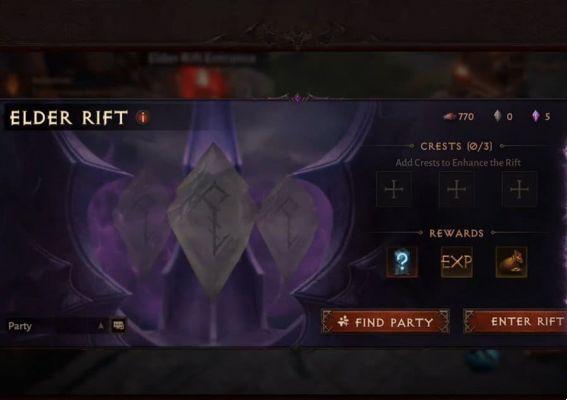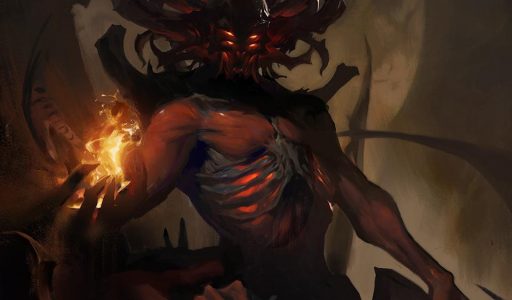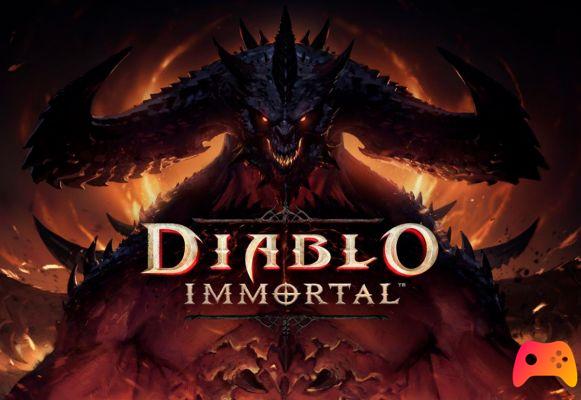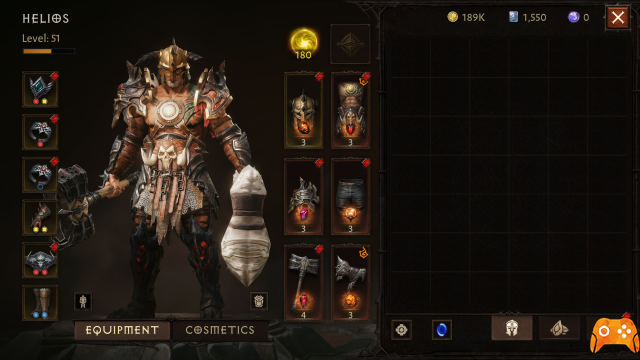
To help you complete the Elder Rifts in Diablo Immortal, we have prepared this guide in which we will walk you through all the information you need to know about them, including how to start, edit and finish Elder Rifts.
Table of contents 1) How to unlock elder fractures in Diablo Immortal 2) How to get into elder fractures in Diablo Immortal 3) How elder fractures work in Diablo Immortal 3.1) What ridges do to elder fractures in Diablo Immortal 4) Diablo Immortal Elder Rift Rewards 5) Elder Rift Modifiers 5.1) Positive Modifying Effects 5.2) Negative Modifying EffectsHow to Unlock Elder's Fractures in Diablo Immortal
To unlock Elder Rifts in Diablo Immortal, you need to complete the main questline until you have completed the first two chapters of the story, which are Wortham and Ashwold Cemetery. You will then reach a new location called "Westmarch" in the game.
Once there, head to the palace courtyard and you will find two obelisks. To unlock the Elder Rift, interact with the obelisk on the left. You don't have to worry about finding them though, as Charsi the Blacksmith will introduce you to Elder Rifts as part of the story when you first arrive in Westmarch.
How to get into the fractures of the elders in Diablo Immortal
To enter an Elder Rift, go to the Palace Courtyard in Westmarch and interact with the obelisk on the left. This will bring up the Elder Rift menu, where you will have the option to enter an Elder Rift by simply pressing the "Enter" button at the bottom right of the menu.
But before you rush into an Elder Rift, there are many things you need to know. Let's first look at the Elder Rifts mechanics in Diablo Immortal.
How elderberry fractures work in Diablo Immortal
Elder Rifts are randomized dungeons in Diablo Immortal where you can complete a simple objective for great rewards. They usually take around 5 minutes to complete and grant incredible rewards, which can also be improved through some items (more on that later).
Elder Rifts are completely free to enter and can be tempted as many times as the player wants. This makes them the perfect place to grow resources.
The core concept of Elder Rifts is similar to Rifts from previous Diablo games. When you enter an Elder Rift, your goal is to fill the progress bar. To do this, you will have to kill all the monsters in the area. These monsters drop progress orbs when you kill them. And as the name suggests, they help fill the progress bar faster when you pick them up.
When you manage to completely fill the progress bar, all monsters in the Elder Rift will vanish and a Rift Guardian boss will spawn in their place. Your ultimate goal will be to kill the Guardian boss.
A timer will start working when you spawn the Guardian boss, but it's not absolutely necessary to kill him before the timer runs out. However, killing the boss before time runs out will grant you extra rewards, so you should always try to kill him as soon as possible.
The map, monster types and Guardian boss in Elder Rifts are completely random.
Elder Rifts can be attempted either alone or in a group of up to 4 players. If you attempt an Elder Rift with a party, the difficulty of the Elder Rift will increase based on the Combat Rating of the most powerful member of the party. And if you try it on your own, it will simply increase based on your combat score.
It is best to manage Elder Rifts in a group where the other members' Combat Rating is slightly higher than yours, as it will allow you to get much better rewards from the rift. However, don't party with someone who is significantly more powerful than you as the dungeon will become too difficult to clear.
When you finish an Elder Rift, you will have 5 minutes to collect your loot before being kicked out of the rift.
What do the crests to the fractures of the elders in Diablo Immortal
When you open the Elder Rift menu, you will notice that there are 3 Crests slots. Crests are a type of currency in Diablo Immortal that can be added to Elder Rifts to modify them.
And when you add Crest to an Elder Rift, they significantly increase the quantity and quality of the rewards you get from the Rift.
Each player in a group can add 3 badges to the Elder Rift. In addition to the regular badges in Diablo Immortal, there are also legendary badges. The game gives you the ability to add 10 legendary badges to a rift instead of just adding 3.
A Normal Crest adds 1 modifier to the Elder Rift, which can be positive or negative. When you add a regular crest, it guarantees that the Elder Rift will drop the runes and gives you a chance to get a legendary item.
A legendary crest adds 2 modifiers to the Elder Rift (one positive and one negative) and ensures that the Elder Rift releases at least one legendary item.
Adding legendary badges to an Elder Rift is also one of the main ways to get legendary gems in the game.
A very important mechanic to note is that if you are in a party, you need to upgrade the Elder Rift with your badges in order to receive runes and legendary items from it. If your party members add Crest but you don't, you will only receive the normal rewards from the Elder Rift.
Adding crests to an Elder Rift also rewards players with the most Fading Embers. The amount of Fading Ember bonus you receive from the Elder Rift depends on the number of Crests the whole group adds to the rift.
Diablo Immortal Elder Rift Rewards
Rifts of the Ancients are one of the best ways to farm Legendary Runes and Gems in Diablo Immortal, but only if you are upgrading Rifts of the Ancients with Crests. Without Crest, Elder Rifts drop gold, experience, Fading Ember, and have a small chance to drop a high-level item.
Elder split modifiers
As stated earlier, when you add a Crest to an Elder Rift, it changes the rift in a positive or negative way. When you add a normal crest, you add a positive or negative modifier to the rift, and when you add a legendary crest, you add two modifiers, which are generally one positive and one negative.
When you fill all three Crest slots for a rift, at least one of those Crests will give a positive modifier. The other two modifiers depend on the case.
The number of modifiers that are added to an Elder Rift is based only on the Crests that were added by the party member who added the highest quality and most Crest count. Badges added by other group members will not apply any modifiers.
Modifiers are of three types. A Crest can add a Common, Uncommon, or Rare modifier to the rift. The chance that it will add a common modifier is 65%, that of an uncommon modifier is 34%, and a rare modifier has only a 2% chance of being added.
When starting an Elder Rift, the first thing you need to do is take a close look at the modifiers. If the modifiers seem too annoying to handle, you and your allies should leave the Elder Rift immediately.
If you leave without attacking any mobs, your Crests will not be depleted. You will then be able to restart the Elder Rift with the same Crests and hope to get better modifiers this time around.
Positive Modifying Effects
Effects added to Elder Rift by some positive modifiers are listed below.
- Hit Il Clock: Grants additional rewards for beating the clock
- Catena Lighting bolt: The player's attacks summon chain lightning bolts
- Extras Legendary Affix: Adds an extra legendary affix to the rift
- Fleet Foot: Increases player movement speed by 20%
- Holy Revenge: Gives the player the ability to inflict Holy Vengeance
- More Shrines: Increases the chances of finding shrines
- Onda d'urto: Grants players the ability to cause shockwaves with their attacks
- Definitive Charge Faster: The player's final skills load faster
- Want To survive: Whenever the player loses 5% of life, he takes 5% less damage.
Negative Modifying Effects
- Elite Monsters: Guarantees that every monster in the rift is Elite
- Ambush Monsters: If the player is hit by a monster from behind, the attack will definitely be a critical hit
- Mortal elite: Increases the strength of Elite monsters but also increases the rewards
- Veloce Monsters: Increases the movement speed of monsters by 20%
- Lava: Lava periodically spawns under the player
- Resurrection: Allows monsters to have a chance to be revived
- No Standing: If the player remains standing for 1 second, he is temporarily immobilized
- Terrified: If a monster has less than 50% health, it will flee
- Wild Hunting: Increases the aggro range of monsters
Deprecated: Automatic conversion of false to array is deprecated in /home/epictrick.com/htdocs/php/post.php on line 612






